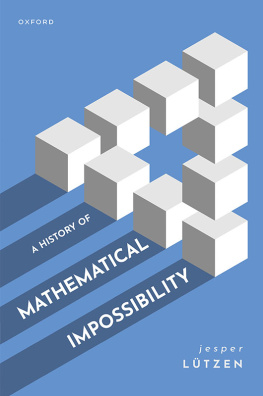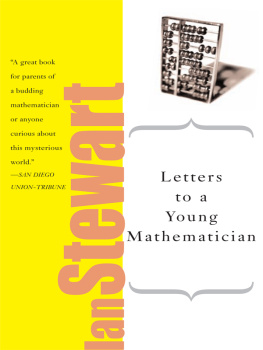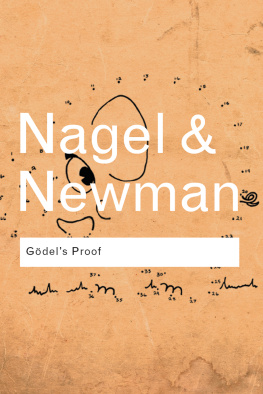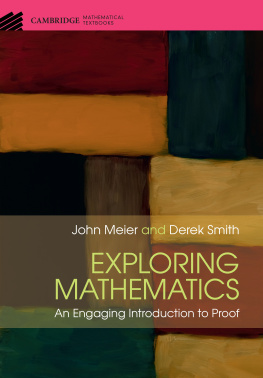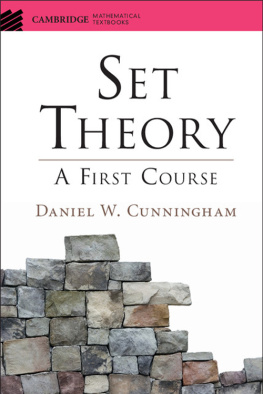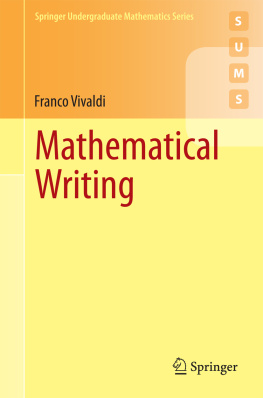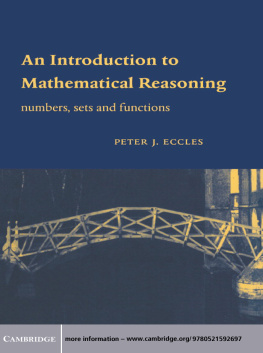Contents
Guide
Pagebreaks of the print version
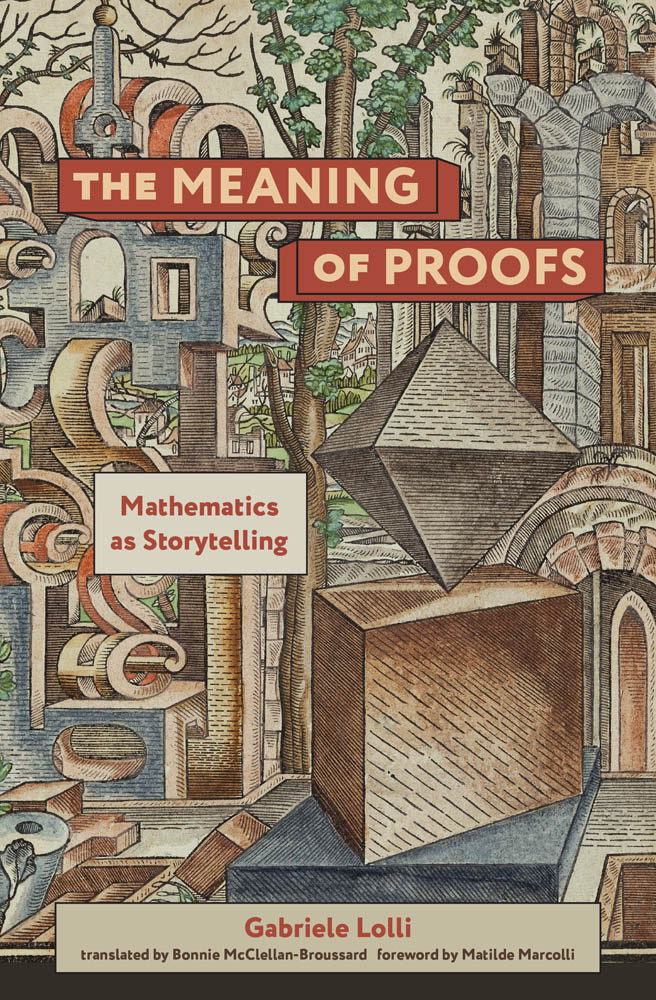
The Meaning of Proofs
Mathematics as Storytelling
Gabriele Lolli
translated by Bonnie McClellan-Broussard
foreword by Matilde Marcolli
The MIT Press
Cambridge, Massachusetts
London, England
2022 Massachusetts Institute of Technology
2018 by Societ editrice il Mulino, Bologna
All rights reserved. No part of this book may be reproduced in any form by any electronic or mechanical means (including photocopying, recording, or information storage and retrieval) without permission in writing from the publisher.
The translation of this work has been funded by SEPS Segretariato Europeo per le Pubblicazioni Scientifiche

Via Val dAposa 7, 40123 Bologna, Italy
The MIT Press would like to thank the anonymous peer reviewers who provided comments on drafts of this book. The generous work of academic experts is essential for establishing the authority and quality of our publications. We acknowledge with gratitude the contributions of these otherwise uncredited readers.
Library of Congress Cataloging-in-Publication Data is available.
ISBN: 978-0-262-54426-9
d_r0
Voglio trovare un senso a questa storia
I want to find a meaning in this story
Vasco Rossi, Italian rock musician
Contents
Foreword
The reader is warned: this is not a typical math popularization book. It is not a collection of useless anecdotes about the lives of mathematicians, peddling dubious genius mythologies. It is also not a magic show of tricks and games, trying to portray mathematics as a form of entertainment for children and young adults.
It is a book about the structure of mathematical writing, and mathematical proofs, but it is also not a book about how to write proofs, of the kind typically designed to expose undergraduate students to rigorous mathematical thinking.
It is a book about mathematical proofs as a form of narrative, a philosophical and poetical reflection about why we write mathematics in the narrative form that we currently use.
The narrative structure of mathematics is analyzed at different levels, from the large scale of the grand narratives that influence the development of mathematical research over the course of a significant amount of time, usually through the contributions of many authors and many papers, down to the smaller scale of how individual mathematical statements and proofs are formulated and developed within the narrative of individual papers.
Examples of the first kind include Kleins Erlangen program (1872): a programmatic manifesto advocating the study of mathematical objects through their symmetries and transformations. Over time, this point of view became extremely influential in both modern mathematics and theoretical physics, from Noethers theorem on symmetries and conservation laws to category theory and its many applications. Not all of these programmatic grand narratives are successful, as the author shows by discussing Hilberts proposal for the formalization of set theory, which was shown to be nonrealizable by Gdels theorem. He also considers contemporary examples such as the Langlands program.
At the level of the structure of individual proofs, one of the nicest parts of the book, in my opinion, is the discussion of how certain structures of mathematical proof are modeled on specific forms of composition in ancient Greek poetry.
This is a book addressed primarily to an intellectually curious public of nonmathematicians, though professional mathematicians will find it interesting too.
The author often relies on literary examples to convey the ideas, rather than on more explicitly mathematical ones. This use of literature as a proxy for mathematics helps make the point that, as creative activities, mathematics and literary composition are ultimately not so different.
The use of metaphors and images in mathematical reasoning and research is also discussed at some length: this is a very important topic because mathematical research makes crucial use of metaphors, and this is something very few people outside of mathematics are aware of. In the authors words, To do mathematics means to move along different levels with different languages, to use fiction and computation, to be poets and factory workers. This is surely one of the best descriptions of a mathematicians activity that I have come across so far.
The use of narrative tools such as visual diagrams or mechanical devices in the context of mathematical proofs is also discussed. This is not just relevant in the historical terms of how the use of such tools was viewed in antiquity, but also in the modern setting with major ongoing research on automated proof verification.
Other topics covered in the book include the evolution of mathematical concepts over time, with historical examples like infinitesimals and infinities, the history of the use of symbols and various forms of logic, and philosophical reflections on the notion of mathematical entities. Lollis own mathematical research is in the field of logic, and this naturally tends to color the choice of topics in the book, but overall the view of mathematics presented to his readers strikes a good balance between historical and modern, and it manages to convey a sense of the very broad span of different areas of research within the field.
I personally would like to see more books on mathematics for the general public that have this kind of cultural span. I also think that a deeper understanding of the narrative forms of mathematics will be of help to both mathematicians and a broader audience interested in mathematics as a part of our culture.
As the one-sentence back cover blurb in the original Italian edition of this book states: Poetry says more with fewer words. So does mathematics.
Matilde Marcolli
Preface
In this book well be talking a lot about mathematics and above all about proofs. The purpose of the ideas presented here is to demonstrate and convince the reader that the natural way to conceive a proof is to construct it like a narrative, and the natural way to understand it is to listen to it like a narrative. This book was published as part of a series entitled Narrating Mathematics. Narrating mathematics doesnt mean talking about the context or the personalities central to creating and teaching mathematics or what theyre doing. Mathematicians dont know the history of yesterday (like the partisans children in the 1958 song Oltre il ponte, by the Italian author Italo Calvino), not even the biographies of those whose theorems they cite. Narrating doesnt even mean summarizing what is already established, beyond debate and inanimate; perhaps that could be described as dissemination. Narrating means talking about the true content of mathematics, explaining it. When standing in front of a painting, how many times have we felt the need for an expert to help us understand why what were looking at is a work of art? And, after the explanation, we see it from a new perspective. When you ask mathematicians what they do, they dont want to (and cant) answer by listing the results theyve found, which wouldnt be understood anyway. However, they would like to explain the meaning of what they do (see appendix, 1). The difficulty lies in the fact that the meaning is not easily defined; when you grasp it, you recognize it: as Augustine says of time in his


